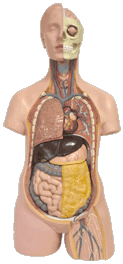At WiseGEEK, we're committed to delivering accurate, trustworthy information. Our expert-authored content is rigorously fact-checked and sourced from credible authorities. Discover how we uphold the highest standards in providing you with reliable knowledge.
What is Involved in Making a Diagnosis of Chronic Pain?
A diagnosis of chronic pain can only be given by a qualified doctor, so a person suffering from such pain will more than likely need to take several trips to a doctor who can perform a series of tests and evaluations to arrive at an accurate diagnosis of chronic pain. The process may include a physical examination as well as a mental health evaluation, a close evaluation of the patient's medical history, and possibly other tests such as an MRI or x-ray. While most cases of chronic pain can be diagnosed, a small to moderate number of cases have no specific cause.
Very often a doctor will begin with an evaluation of the patient's medical history to arrive at a diagnosis of chronic pain. The doctor may find pre-existing conditions that can lead to pain in certain parts of the body or in all parts of the body, and if the doctor finds such a cause, he or she may conduct more tests and evaluations to test the theory. This means a physical examination will often follow during a diagnosis of chronic pain. This step of the process may help the doctor arrive at a firm conclusion, or it may eliminate other possibilities the doctor was considering.

One of the most important steps in the process of arriving at a diagnosis of chronic pain is a mental health evaluation. A doctor or other professional may evaluate the patient's mental health, including stress level, risk of depression, and so on. Very often when a physical cause of chronic pain cannot be found, a mental evaluation may reveal a potential cause of the pain. Elevated stress levels and depression, for example, have been linked to conditions such as fibromyalgia, which is chronic pain and sensitivity throughout the body. Elevated stress levels can also lead to tension and strain in the muscles of the body, which can trigger a series of painful conditions.
Nerve damage and compression is a common cause of chronic pain, so a doctor will sometimes perform tests on the nerves during the process of arriving at a diagnosis of chronic pain. If a nerve becomes compressed, or pinched, it can cause pain in any part of the body that is serviced by that nerve. Nerves can become compressed due to a variety of conditions, including muscle tightness, herniated discs in the spine, arthritis damage in the joints, and so on.
AS FEATURED ON:
AS FEATURED ON:










Discuss this Article
Post your comments